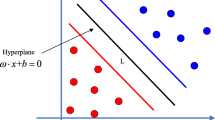Abstract
In this paper, a virtual rehabilitation training system based on electroencephalogram (EMG) feedback is proposed to solve the problem that the existing virtual rehabilitation training methods can not reflect the initiative of patients and lack of individual adaptability. Aiming at the EEG data fusion rehabilitation system based on Virtual Prototyping technology, a motion pattern recognition method based on the feature fusion of EEG and EMG signals is studied to improve the accuracy and flexibility of the rehabilitation training system. The corresponding virtual rehabilitation training scene is designed, and the control and feedback adjustment of the virtual scene are realized by using the above EEG feature analysis method. Finally, the virtual rehabilitation training is realized. The multi-level coupling relationship between EEG and EMG signals under different grip forces was explored by using the synchronous coupling characteristics between EEG and EMG signals, which provided a theoretical basis for further application in clinical rehabilitation evaluation.








Similar content being viewed by others
References
Ling, L., Xiang, C., Lu, Z. et al., Development of an EMG-ACC-based upper limb rehabilitation training system[J]. IEEE Trans. Neural. Syst. Rehabil. Eng. 25(3):244–253, 2016.
Al-Quraishi, M. S., Ishak, A. J., Ahmad, S. A. et al., Classification of ankle joint movements based on surface electromyography signals for rehabilitation robot applications[J]. Med. Biol. Eng. Comput. 55(5):1–12, 2017.
Hu, X. L., Tong, R. K., Ho, N. S. et al., Wrist rehabilitation assisted by an electromyography-driven neuromuscular electrical stimulation robot after stroke[J]. Neurorehabil. Neural Repair 29:767–776, 2015.
Miyaoka, S., and Miyaoka, Y., An electromyography-based system for measuring the flavor detection time in healthy adults[J]. J. Behav. Brain Sci. 3(8):581–583, 2013.
Yu, C., Wang, Z., Yu, Z. et al., Design of rehabilitation training system with electromyography feedback for stroke patients[J]. Chinese Journal of Medical Instrumentation 39(3):187–189, 2015 205.
Yang, G., Deng, J., Pang, G., et al. An Iot-enabled stroke rehabilitation system based on smart wearable armband and machine learning[J]. IEEE J. Transl. Eng. Health Med. PP(99):1–1, 2018.
Roset, S. A., Gonzalez, H. F., Sanchez, J. C. Development of an EEG based reinforcement learning Brain-Computer Interface system for rehabilitation.[J]. 2013:1563–1566, 2013.
Li, C., Rusák, Z., Horváth, I. et al., Influence of complementing a robotic upper limb rehabilitation system with video games on the engagement of the participants: A study focusing on muscle activities[J]. Int. J. Rehabil. Res. 37(4):334–342, 2014.
Liu, Y. H., Huang, H. P., Huang, T. H. et al., Controlling a rehabilitation robot with brain-machine Interface: An approach based on independent component analysis and multiple kernel learning[J]. International Journal of Automation & Smart Technology 3(1):67–75, 2013.
Wu, S., A traffic motion object extraction algorithm[J]. International Journal of Bifurcation and Chaos 25(14):1540039, 2015.
Wu, S., Wang, M., and Zou, Y., Research on internet information mining based on agent algorithm[J]. Futur. Gener. Comput. Syst. 86:598–602, 2018.
Wang, Q., Chen, X., Chen, R. et al., Electromyography-based locomotion pattern recognition and personal positioning toward improved context-awareness applications[J]. IEEE Trans. Syst. Man Cybern. B 43(5):1216–1227, 2013.
Yu, W., and Li, S., Recommender systems based on multiple social networks correlation[J]. Futur. Gener. Comput. Syst. 87:312–327, 2018.
Yu, W., Li, S., Tang, X. et al., An efficient top-k ranking method for service selection based on ε-ADMOPSO algorithm[J]. Neural Comput. & Applic.:1–16, 2018.
Funding
This research is based upon work supported in part by the National Natural Science Foundation of China (No. 61502350).
Author information
Authors and Affiliations
Corresponding author
Ethics declarations
Ethical Approval
This article does not contain any studies with human participants performed by any of the authors.
Additional information
This article is part of the Topical Collection on Image & Signal Processing
Rights and permissions
About this article
Cite this article
Li, S., Yang, J. Study on Brain Electromyography Rehabilitation System Based on Data Fusion and Virtual Rehabilitation Simulation. J Med Syst 43, 22 (2019). https://doi.org/10.1007/s10916-018-1142-z
Received:
Accepted:
Published:
DOI: https://doi.org/10.1007/s10916-018-1142-z




